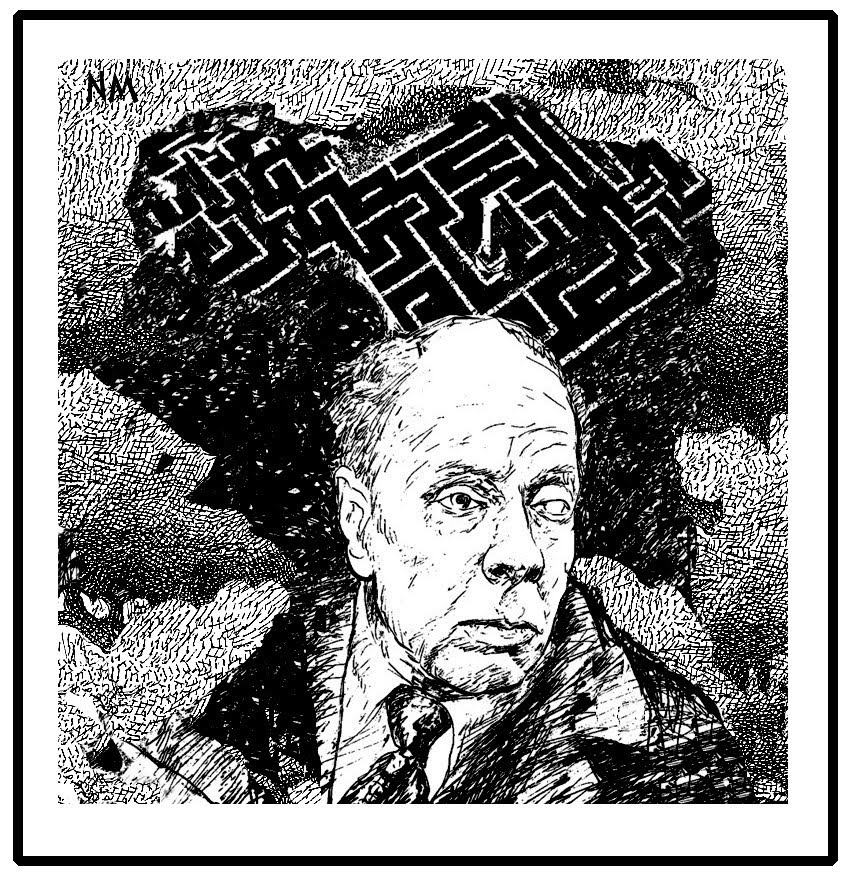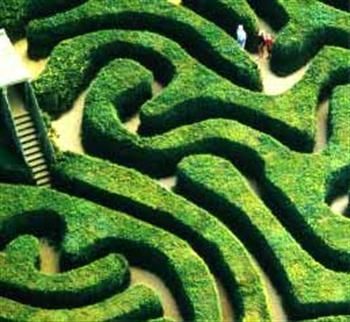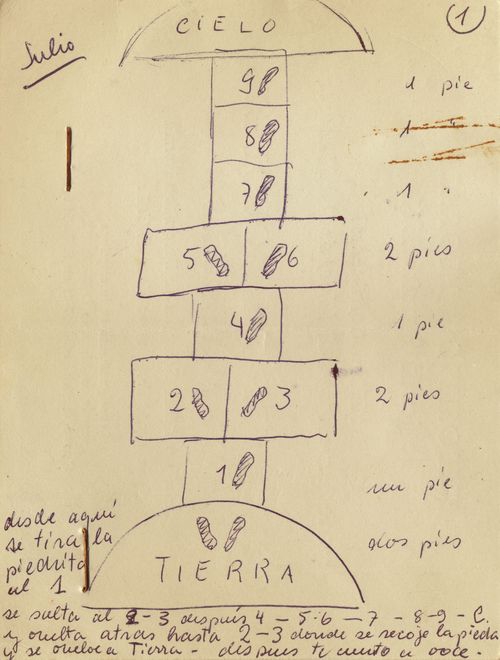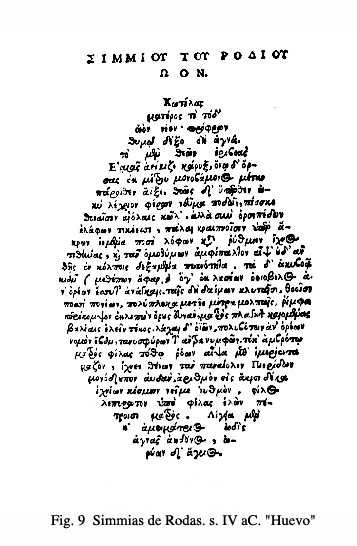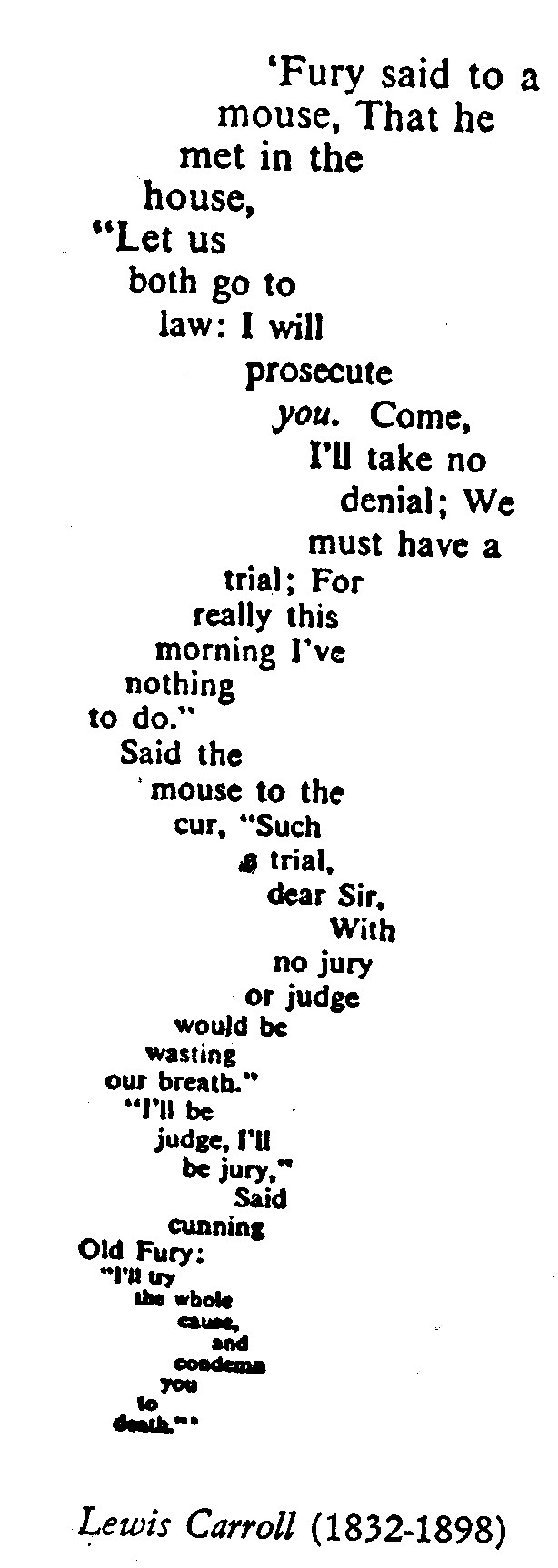Hay varios tipos de poesía visual, la cual incluye a la llamada ciberpoesía o e-poetry. El formato que nosotros vamos a utilizar para adaptar “Reflexiones tropicales” será el del hipertexto multimedia, es decir, el de los hipervínculos o referencias cruzadas. Esos vínculos –o enlaces– llevarán a los lectores a otros “documentos” que, en este caso, serán visuales, sonoros (música, voz) y textuales, creando así una pieza interdisciplinar.
There are several types of visual poetry, including cyberpoetry or e-poetry. The format we’re going to use to adapt ‘Tropical Reflections’ will be multimedia hypertext, ie, based on hyperlinks or cross-referencing. These hyperlinks will take readers to other ‘documents’, which, in this case, will involve image, sound (music, voice) and text, thus creating an interdisciplinary piece.
En la literatura, el genio de Jorge Luis Borges concibió “El jardín de senderos que se bifurcan” (1941), un cuento que ya entonces reflejaba la idea del proceso hipertextual (o de la intertextualidad) y donde se identifican diferentes estratos o planos.
In literature, Jorge Luis Borges showed his genius with “The Garden of Forking Paths” (1941), a short story that reflected the idea of hypertextuality (or intertextuality), where different layers or levels can be identified.
La psique humana relaciona conceptos no necesariamente de forma lineal. Por lo tanto, podemos decir que el pensamiento humano también se “ordena” de esa manera: la mente es como un gran hipertexto. La información se encuentra dispersa en varios puntos o nodos y, por medio de búsquedas ya sea conscientes o intuitivas, o de evocaciones, se llega a una información particular.
El formato hipertextual nos permitirá jugar con la espacialidad de la información que queremos plasmar en nuestro poema visual. Esa información estará conformada por fragmentos (a veces visuales, otras veces sonoros…) relacionados entre sí, formando un conjunto. No existirá un solo camino a seguir para conocer esos fragmentos, más bien, cada lector explorará el suyo propio o seguirá diversos caminos. Además, puesto que no habrá necesariamente un orden, el poema en sí podrá “moverse” (o ser generado como sistema vivo, como estructura orgánica), respondiendo siempre a los enlaces que los lectores elijan. En ocasiones parecerá incluso que ni siquiera existe un principio establecido, ni un final, ya que, aunque las partes estarán interconectadas, no habrá una jerarquía de relaciones. Por lo tanto, se plasmará y desarrollará una lógica circular. Obviamente, es por esta razón que se trata de una pieza artística interactiva, aunque también incluiremos una función automática por si algunos lectores desean que los fragmentos del poema aparezcan en un orden convencional. Esto no es algo nuevo e incluso se ideó antes de la llegada de los medios digitales. Ya Julio Cortázar nos ofreció un desafío parecido en el manual de instrucciones de su novela Rayuela (1963).
The human psyche doesn’t necessarily relate concepts in a linear manner. So we can say that human thought is also ‘ordered’ in this way: the mind is a form of hypertext. Information is scattered in various spots or nodes; through conscious or intuitive searches, we arrive at certain information.
The hypertext format will allows us to play with the spatial element of the information we want to include in our visual poem. This information will be presented in the form of fragments (sometimes visual, sometimes aural…), all interconnected and creating a whole. There won’t be a set way to explore these fragments, each reader will discover his or her own way or follow several paths. Furthermore, since there won’t be a set order, the poem will ‘move’ (or be generated as a live system, an organic structure), always responding to the links chosen by the reader. In some cases, it might even seem that there isn’t a beginning or an end, since all parts are interconnected and non-hierarchical. Thus, we will try to capture and develop a circular logic. This is why it will be an interactive artistic piece, though we will include an option for those readers who want the fragments of the poem to appear in a conventional way. This is not something new; it existed before the advent of digital media. Julio Cortázar challenged us in a similar way in the instructions manual he included in his novel Hopscotch (1963).
Hay un poema visual interactivo que nos gusta mucho, porque explora el tema de la memoria con elegante sencillez artística: ii — in the white darkness:about [the fragility of] memory. Es de la autoría de Reiner Strasser y M.D. Coverley y fue publicado por primera vez en enero de 2004 en el sitio web de Strasser; luego fue incluido en el volumen I de la Electronic Literature Collection. Este poema visual viene a ser “una meditación multimedia sobre la naturaleza de la memoria. Al pulsar los puntos, tal si estuviéramos detrás de un velo, el lector activa una serie de collages de fotografías y sonidos ambientales que representan el proceso de intentar recuperar recuerdos perdidos, los cuales aparecen y desaparecen gradualmente fuera de lo inteligible”. Para verlo, pulse aquí.
There is an interactive visual poem that we really like because it explores the theme of memory with elegant and artistic simplicity: ii — in the white darkness: about [the fragility of] memory. Its authors are Reiner Strasser and M.D. Coverley and it was first published in January 2004 on Strasser’s website. Later, it was included in Volume I of the Electronic Literature Collection. This visual poem “is a multimedia meditation on the nature of memory. By choosing pulsing dots as if from behind a veil, the reader activates collages of photographs and ambient sounds, representing the process of trying to recover lost memories, which surface and fade in and out of intelligibility.” To see it, click here.
El concepto de poesía visual, como tal, se remonta a los caligramas del poeta griego Simmias de Rodas, en el siglo IV a.C. “Su caligrama El huevo tiene que leerse alternadamente, el primer verso y luego el último, el segundo verso y luego el antepenúltimo, hasta terminar en el verso central.” En el siglo XIX, Lewis Carroll también realizó caligramas. A principios del siglo XX, el poeta francés Apollinaire revivió al género gracias a su libro Caligramas. Poemas de la paz y de la guerra (1913-1916), el cual contiene poemas escritos en la trinchera durante la Primera Guerra Mundial. Poco después, la poesía visual fue acogida por las vanguardias y entre sus representantes más conocidos se encuentran Ramón Gómez de la Serna, Gerardo Diego, Vicente Aleixandre, Federico García Lorca, Rafael Alberti, Vicente Huidobro, Juan José Tablada, Oliverio Girondo, César Moro, etc. Años más tarde, sobresalieron los trabajos de Joan Brossa, Juan Eduardo Cirlot, el Grupo Zaj, Nelly Blanco, entre otros. Para leer más sobre los orígenes y el desarrollo de la poesía visual, ir aquí.
The concept of visual poetry itself goes back to the calligrammes of the Greek poet, Simmias of Rodas, in the fourth century B.C. His calligramme The Egg has to be read in an alternate manner: the first line then the last one, the second line then the penultimate line, until reaching the end in the middle of the poem. In the nineteenth century, Lewis Carroll also created calligrammes. At the beginning of the twentieth century, French poet Apollinaire revived the genre with his book, Calligrammes. Poems of war and peace (1913–1916), which includes poems written when he was in the trenches during World War I. A few members of the avant-garde movements, such as Ramón Gómez de la Serna, Gerardo Diego, Vicente Aleixandre, Federico García Lorca, Rafael Alberti, Vicente Huidobro, Juan José Tablada, Oliverio Girondo, César Moro, etc, embraced later, visual poetry. More recently, we find the works of Joan Brossa, Juan Eduardo Cirlot, the Zaj Group, Nelly Blanco, among others. To read more about the origins and development of visual poetry, click here.



